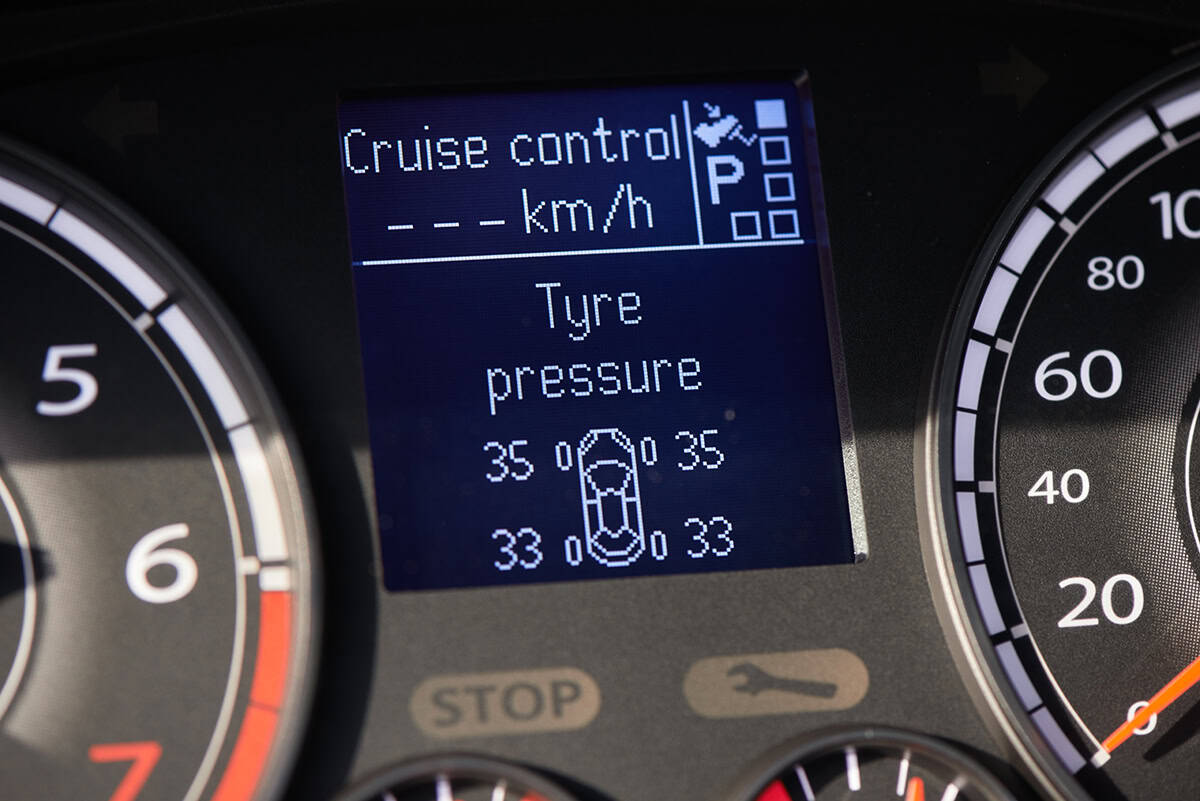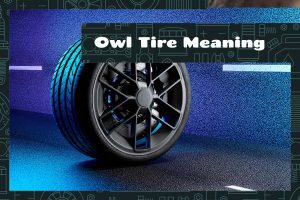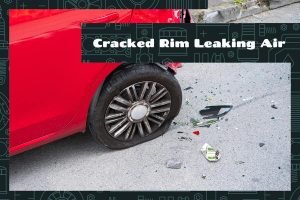The Tire Pressure Monitoring System (TPMS) continuously check the ‘health’ of your tires, making sure they have enough air pressure to keep you safe on the road. If anything seems off, they quickly alert you on your car’s dashboard. As reliable as they are, they are prone to a wide array of problems.
Common TPMS Problems include:
- TPMS warning light stays on
- Faulty TPMS sensors
- Dead TPMS battery
- Parts of the TPMS getting corroded
- False TPMS warnings
This article will dive deeper into common TPMS problems, why they happen, and how you can fix them.
A Brief Intro to TPMS
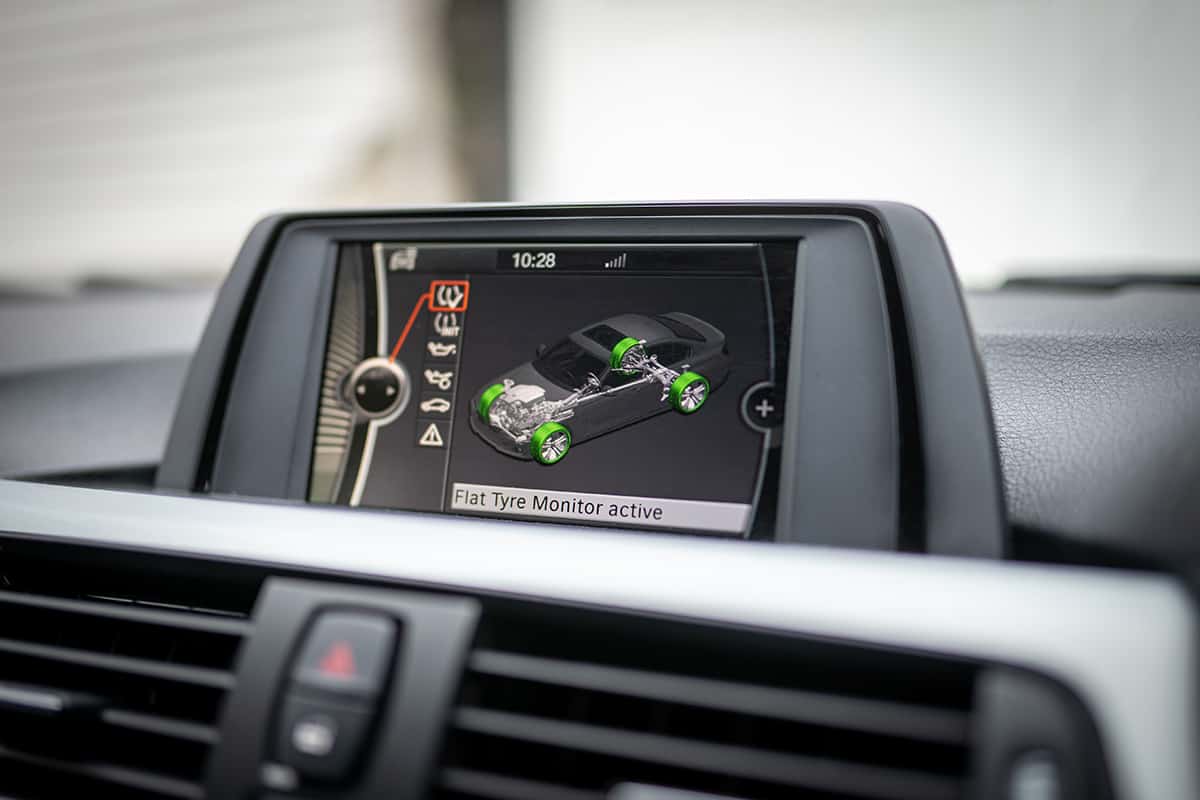
TPMS is a built-in feature in modern vehicles. It uses sensors to monitor the air pressure in each tire. If the air pressure becomes too low or too high, the system alerts you by illuminating a warning light on your dashboard. This allows you to address the issue before it becomes a bigger problem.
TPMS contributes significantly to vehicle safety. Correct tire pressure is crucial for the efficient operation of your vehicle. It affects your car’s handling, tire lifespan, fuel consumption, and overall safety. TPMS ensures your tires are at the optimal pressure, improving your driving experience and keeping you safer on the road.
Common Problems with TPMS
Every system, even the diligent TPMS in your car, can sometimes run into problems. Here, we’ll talk about the usual troubles you might face with your TPMS and explain why they happen.
1. TPMS light illumination
The TPMS light is a little icon on your car’s dashboard. If it’s on and not blinking, that usually means one or more of your tires have low pressure. This could be due to a simple reason like a change in weather or a leak in the tire. But if the light is flashing, it could be a signal that there’s something wrong with the TPMS itself.
2. Faulty TPMS sensor
Every tire in your car has a TPMS sensor that checks the tire’s pressure. But like every piece of tech, these sensors can become faulty. They might stop sending accurate readings, sending false alarms, or stop working altogether. This can happen due to damage, like when changing tires, or just because of regular wear and tear over time.
3. Dead TPMS battery
Your TPMS sensors need batteries too. They generally last a long time, but eventually, they’ll run out of power and need to be replaced. A dead battery could lead to incorrect pressure readings or no readings at all.
4. Corrosion of TPMS parts
Corrosion, or the gradual destruction of metal, can affect your TPMS. This often happens when you use the wrong kind of valve cap or when you drive in harsh conditions, like on salty roads in winter. Corroded parts can cause air leaks, leading to low tire pressure and possible tire damage.
5. False TPMS warning
Sometimes, your TPMS might warn you about a pressure problem when there isn’t one. This is known as a false warning, and it can happen for various reasons. For example, if you’ve just replaced your tires or if there’s a problem with the TPMS software. False warnings can be confusing, but it’s essential to get them checked out to make sure your TPMS is working correctly.
TPMS Light and its Warnings
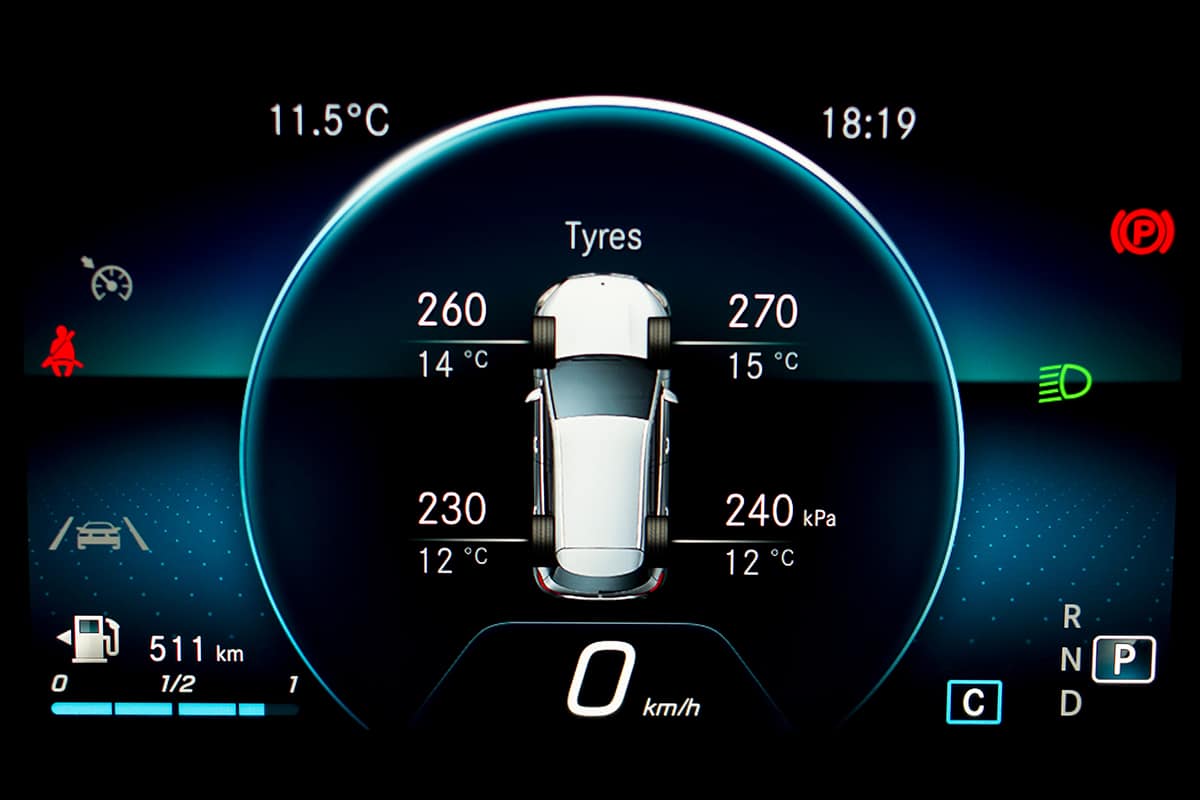
The TPMS symbol uses a light to communicate with you. It’s a tire-shaped symbol on your dashboard with an exclamation mark in the middle. But what exactly does it mean when this light comes on? Let’s find out.
Solid TPMS light
If your TPMS light is on and not blinking, it’s alerting you that at least one of your tires has low pressure. The pressure could be low for several reasons. For instance, you might have a puncture that’s slowly letting air out of the tire. Sometimes, when the weather gets colder, the air in the tires can contract, leading to lower pressure. Other times, it might be because the tire is simply old and worn out.
Whatever the reason, if your TPMS light comes on, it’s best to stop at a safe place and check your tires.
Flashing TPMS Light
On the other hand, if your TPMS light is blinking, it means there’s a problem with the TPMS system itself. The issue could be a faulty sensor that’s not sending correct readings or a dead TPMS battery that needs to be replaced. It could also be due to a fault in the TPMS computer system in your car.
How to Reset or Relearn TPMS
Your car’s TPMS needs to be reset or relearned. This can happen when you replace your tires, or if your TPMS has been acting a bit wonky. Here’s a simple guide on how to do that.
Resetting your TPMS
Resetting your TPMS is like restarting your computer when it starts behaving strangely. It gives your system a fresh start. Here are the steps to reset your TPMS:
- Check tire pressure: First, you need to make sure all your tires have the right pressure. You can find the correct pressure in your car’s manual or on a sticker usually found on the driver’s door.
- Find the reset button: Once your tires are properly inflated, look for the TPMS reset button in your car. It could be on the steering wheel or in the glove box. If you can’t find it, your car’s manual can help.
- Press the reset button: Press the reset button and hold it until the TPMS indicator light on the dashboard blinks three times, then release. After a few minutes, the light should go off, indicating that the TPMS has been reset.
Relearning your TPMS
If you have new tires or new TPMS sensors, you might need to do a TPMS relearn. This process teaches your car’s TPMS to recognize the new sensors. The relearn process varies by car make and model, but here are the general steps:
- Inflate tires: Start by making sure your tires are at the correct pressure.
- Initiate relearn mode: You need to put your TPMS into relearn mode. This could involve a sequence of actions like pressing the hazard light button six times or holding down the TPMS reset button. The correct sequence should be in your car’s manual.
- Relearn sensors: Once in relearn mode, you might need to drive your car for a while at a certain speed. Other cars might require a tool to relearn the sensors. Again, your car’s manual will have the right steps.
How to Avoid Common TPMS Problems
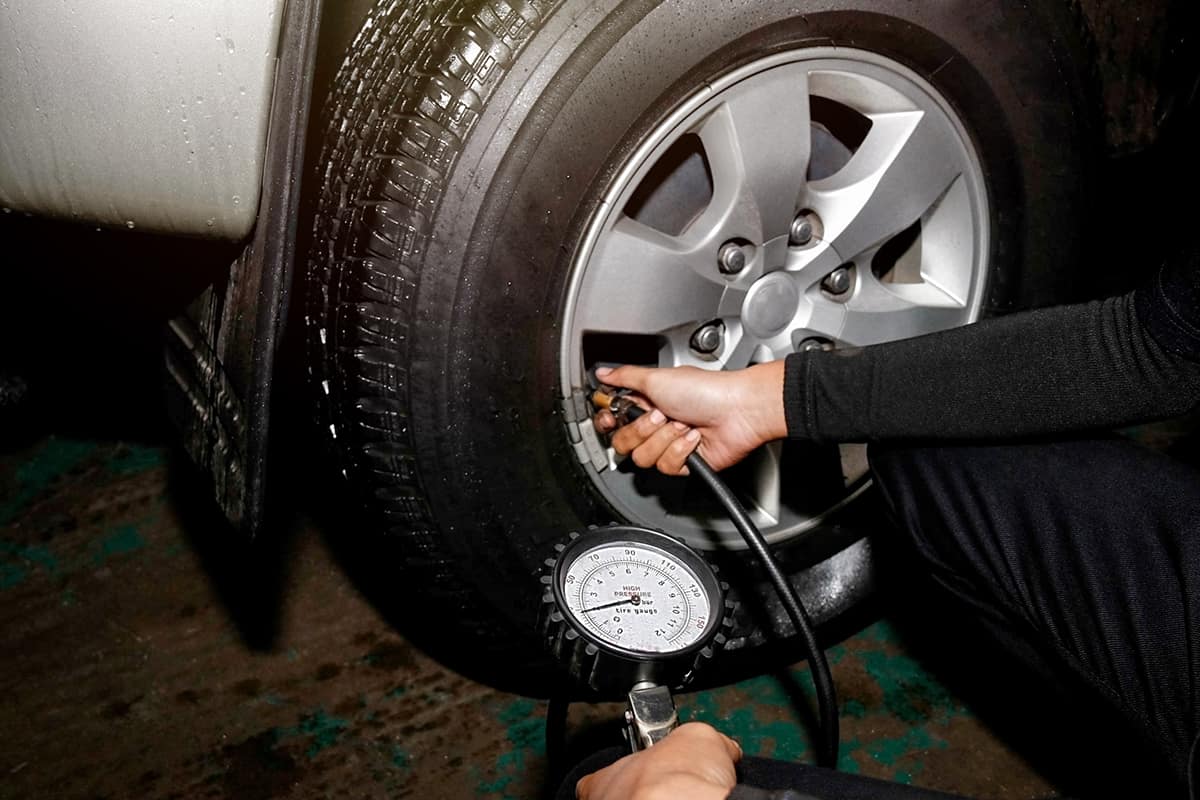
By following these tips, you can keep your TPMS in good shape and avoid issues that might cause it to malfunction.
Regular Maintenance
Maintaining your TPMS is as essential as changing your car’s oil or getting regular tune-ups. Make sure to include TPMS checks during your routine vehicle maintenance. Here’s how:
- Check tire pressure regularly: You don’t always need to wait for the TPMS light to check your tire pressure. Get a tire pressure gauge and make it a habit to check the pressure regularly. This will help you catch any issues early.
- Inspect TPMS sensors: When you change your tires, take a moment to inspect the TPMS sensors. Look for any damage or signs of wear and tear. If you spot any, it’s best to replace the sensors.
- Look for corrosion: Corrosion can affect TPMS parts. When you’re inspecting your tires, look out for signs of corrosion. If you spot any, talk to a professional about how best to deal with it.
Careful with Tire Service
Even simple things like changing a tire can sometimes damage TPMS sensors. So, here are a few tips:
- Inform tire service about TPMS: When you take your car in for tire service, make sure to let them know you have TPMS. This will help them be more careful when handling your tires.
- Use the right parts: If any TPMS parts need replacing, make sure to use the right parts. Using the wrong valve cap, for example, can cause corrosion.
TPMS Battery Life
While you can’t prevent a TPMS sensor battery from running out of power, you can be prepared:
- Know your battery life: TPMS sensor batteries usually last between 5 to 10 years. Knowing this can help you anticipate when you might need to replace them.
- Plan for replacement: When a TPMS battery dies, the entire sensor usually needs to be replaced. It might be a good idea to plan for this, especially if your car is reaching the 5-year mark.
